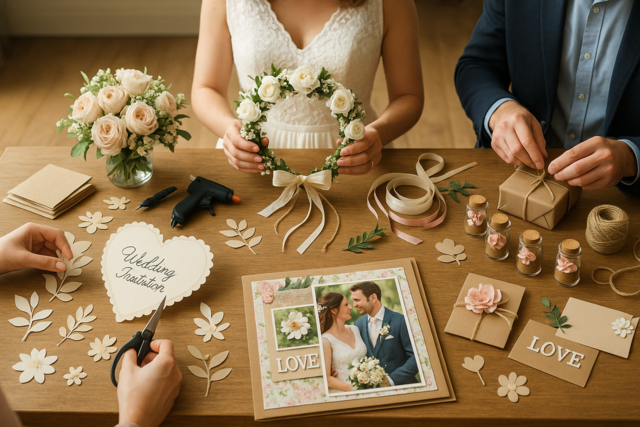Understanding the role of the interior designer and how the designer works with professionals in other disciplines.
Article overview:
-
Interior designers are charged with creating a space that is both functional and aesthetically pleasing. In order to do so, interior designers must take a holistic view of an existing or not-yet existing space and imagine what could become of the space.
-
Interior designers use their knowledge of many disciplines to create a successful space.
-
Interior designers and interior decorators have different roles. Interior designers may also be interior decorators, but interior decorators may not be interior designers.
-
There are many specialties within the field of interior design.
-
Architects
-
General contractors
-
Plumbers
-
Electricians
-
Painters
-
Tilers and stone masons
-
Flooring professionals
-
Woodworkers
-
Window and door specialists
-
Furniture manufacturers
-
Artists and sculptors
-
Landscape architects
-
Climate control specialists
-
LEED and sustainability specialists
-
City planners and government officials
For that reason, successful interior designers need to spend time understanding what each of these different disciplines does, and how the disciplines work together.
Often interior designers will have an integral role in the decorating of a space because of their oversight and planning role. In a sense, an interior designer is often like a project manager, with his or her hands in many pots. Because of their holistic approach to a space, interior designers are often called in to consult with clients before a project begins, especially on new construction projects.
Interior decorators, however, have very specialized roles. Decorators are charged with working within a developed space to create a particular feel. Unlike interior designers, decorators do not manipulate the foundations of a space. Instead, they must be able to see the possibilities that exist in the current space. Interior decorators may have more in-depth knowledge of design principles, styles, and trends than interior designers, as well.
In most cases, an interior designer and an interior decorator will work closely together; they may also be the same person. However, interior decorators may not work with professionals in other trades, the way an interior designer does.
Both interior decorators and interior designers must be skilled at selecting:
-
Window treatments
-
Bedding
-
Furniture
-
Artwork
-
Accessories
-
Storage units
-
Light fixtures
-
Carpets and rugs
-
Colors
-
Fabrics and textures
-
Design styles
-
Layout
-
Designs for special events
-
And more
However, interior designers must take their knowledge a few steps further to include:
-
Space planning
-
Kitchen and bath design
-
Plumbing layout and fixtures
-
Lighting layout and fixtures
-
Sound design
-
Flooring
-
Custom carpentry
-
Stone and tile
-
Climate control
-
Windows and doors
-
Cabinetry
-
Specialty design, such as LEED
-
Building codes
-
Americans With Disabilities Act requirements
-
And more
There are building codes and regulations for every space, but they may vary based on the type of space.
Interior Design Specialties
As with any professional discipline, the field of interior design encompasses many different specialties. Many interior designers work within all specialties, but a specialty is not required. Also, some interior designers choose to limit their projects to one particular specialty. These specialties include:
-
Corporate
-
Retail
-
Government
-
Healthcare
-
Hospitality
-
Institutional
-
Residential
-
Sustainability
In order to design a successful space in any of these specialty groups, interior designers need to be aware of the particular government codes and regulations, which can differ from structure to structure.
Interior designers will also want to be sure they understand how each space will be used � and by whom � so they can follow best practice design standards. For example, the upholstery that an interior designer uses for a public space may differ greatly from the upholstery an interior designer selects for a residential space.
Evolution of Design
Since the days of cave dwellers, humans have been organizing their living, working, and relaxation spaces according to their needs. As time has evolved, spaces became not only functionally arranged, but also developed with an increasing focus on aesthetic appeal.
Section overview:
-
The evolution of form and function
-
What we can learn from cave dwellings
-
Architects are the original interior designers
-
The Industrial Revolution made mainstream interior design possible
-
The establishment of interior design schools and associations
Most interior designers seek to marry form and function.
The Evolution of Form and Function
Elements that we have come to regard as necessary for any modern-day shelter are not the same as the elements that were conventional and necessary for our cave-dwelling ancestors. However, the basic rule for interior design throughout the centuries remains the same: Spaces need to be functional. If a space is visually appealing, but not functional, then it is simply art work.
Today's interior design principles are similar to the design principles used by prehistoric cave-dwellers.
To understand the fundamentals of interior design, it is important to give credence to the lessons from our cave-dwelling ancestors. After all, their homes were developed for survival and met basic human needs.
Here's a short list of what we can learn from cave-dwellers about residential design:
-
Homes provide shelter from the elements.
-
Different environments may call for different types of structures, and may be built with different materials.
-
A home should have enough space for the inhabitants to go about their daily lives comfortably.
-
Homes have different areas for different purposes. These spaces may include areas for:
-
Preparing meals and eating
-
Bathing
-
Praying or participating in spiritual practices
-
Gathering with one another
-
Sleeping
-
Caring for children
-
-
Homes provide protection from the elements and from other animals (including humans).
-
Homes require lighting.
-
Homes require climate control, which may vary based on the season.
-
Many homes contain evidence of story-telling and self-expression, such as ornate pottery, drawings on the wall, dolls, and other artifacts.
-
Many homes have separate living and sleeping places for different members of a family.
-
Homes are often designed around the unique uses required by each family. These requirements may change as a family grows.
Architects Are the Original Interior Designers
The field of interior design is still in its early stages. The interior design profession developed out of necessity; every space needs to be laid out, planned, and finished. However, for centuries, architects were responsible for designing a structure and enlisting the help of artists, furniture-makers, and other craftsmen to develop the living and working space within the structure. Interior design and architecture, thus, were often seen as being one and the same.
Architectural services, of course, were only available to those who could afford it. Even the most stunning and opulent spaces in the world, such as Versailles, were not designed by professional interior designers. Instead, the spaces were merely arranged by artisans and craftsmen who would fill the rooms with hand-crafted furniture and line the walls with opulent artwork and light fixtures. The architect was responsible for overseeing the development of these interior spaces.
The Industrial Revolution Made Mainstream Interior Design Possible.
New York City socialite Elsie de Wolfe is credited with being the first professional interior designer. Around 1900, de Wolfe began offering "interior decoration" services to other society members in New York City.
De Wolfe developed a reputation for transforming the traditional Victorian stylings within the New York homes into more comfortable and colorful spaces. She used white paint on walls that were otherwise dark, added cheerful colors, and used flower prints to add visual appeal. De Wolfe not only helped to begin the movement away from dark Victorian decor, but, in doing so, she opened up a whole new professional field.
The field of interior design developed, in large part, as a result of the Industrial Revolution, during which time mass-produced furniture and accessories were made available at affordable prices.
The Establishment of Interior Design Schools and Associations
As with any profession, interior designers required education. Parsons, the New School for Design was one of the first schools to offer interior decorating courses. Along with education came a desire for continuing education and camaraderie with like-minded professionals. Before long, decorators' clubs developed throughout the country.
The AID is one of the nation's oldest interior design associations.
In 1931, the American Institute of Interior Designers (AID) became the first national decorators association (then it was called the American Institute of Interior Decorators). AID merged with the National Society of Interior Designers (NSID) in 1975 to become the American Society of Interior Designers (ASID), which is the largest organization of interior designers today.
While interior design began as a service for residential clients, interior designers began working in commercial space around the 1940s.Dorothy Draper is widely regarded as the first designer to work primarily in commercial spaces, such as hotels, lobbies, and retail stores.
Over time, interior designers began to not only design with appealing furniture, colors, and fabrics, but they also began to design in certain styles. An interior design style represents colors, shapes, furniture, artwork, and other elements that work together to create an overall look and feel.
An interior design style may be based on a type of structure, such as modern. Styles may be based on countries, such as Mexican style. Styles may also be based on a decade, such as the 1950s.
From these schools and associations, interior design standards were developed. To support these standards, state, local, and government offices also established codes and regulations spanning all aspects of interior design.
Today's designers not only need to learn from the lessons of the cave dwellers about the importance of form, they also must learn about the various design styles throughout history, design standards, and codes to enforce those standards. In addition, designers need to keep a sharp eye on current trends so they can stay knowledgeable about the industry and be inspired by what's going on around them.
The field of interior design continues to evolve. With the birth of augmented reality and 3D virtual landscapes, new styles and standards in interior design appear to be quickly coming. Therefore, while today's interior designers need to constantly investigate what has already been done in the field, they also need to stay abreast of changes and technologies so they can be prepared for the future of interior design.
























